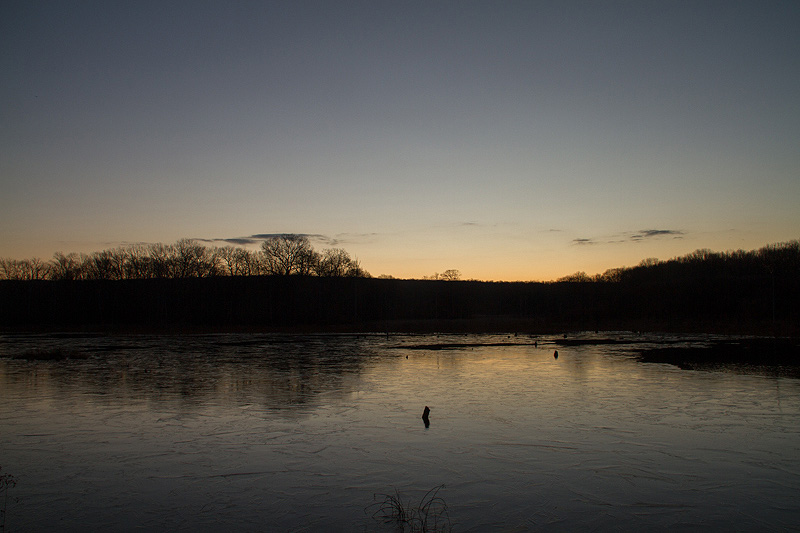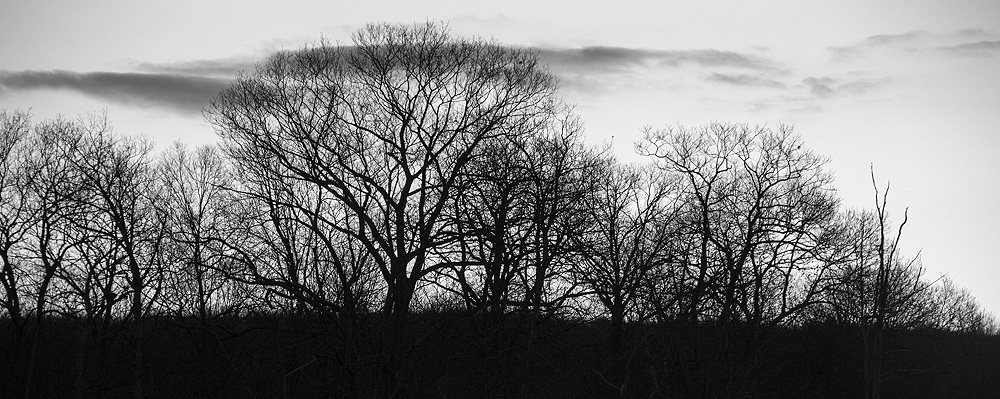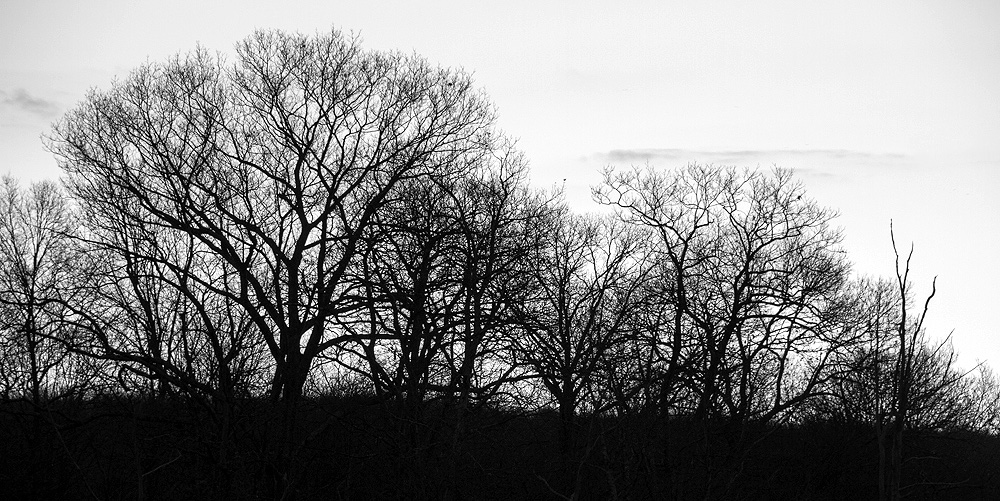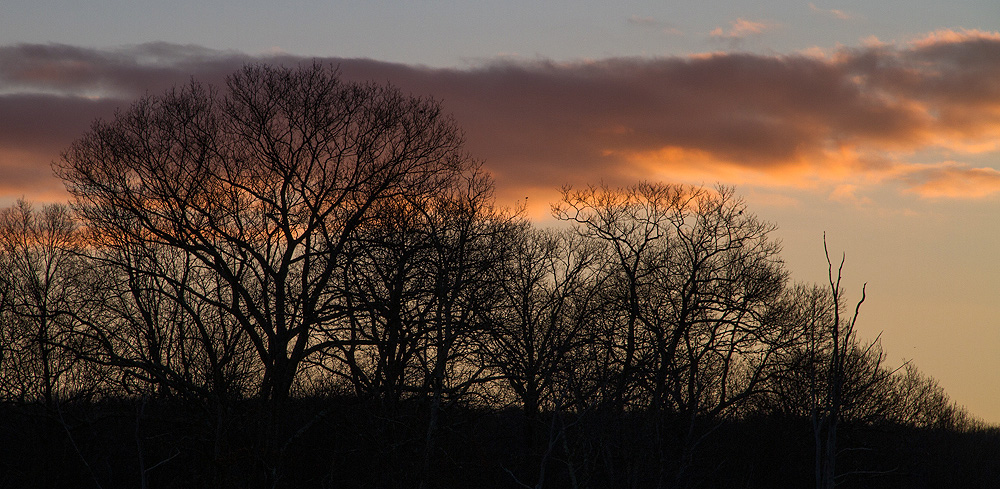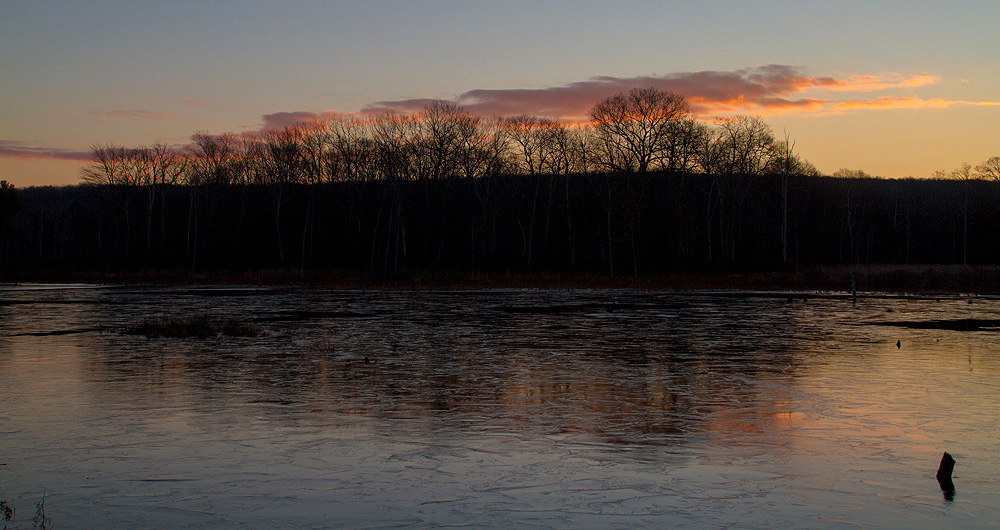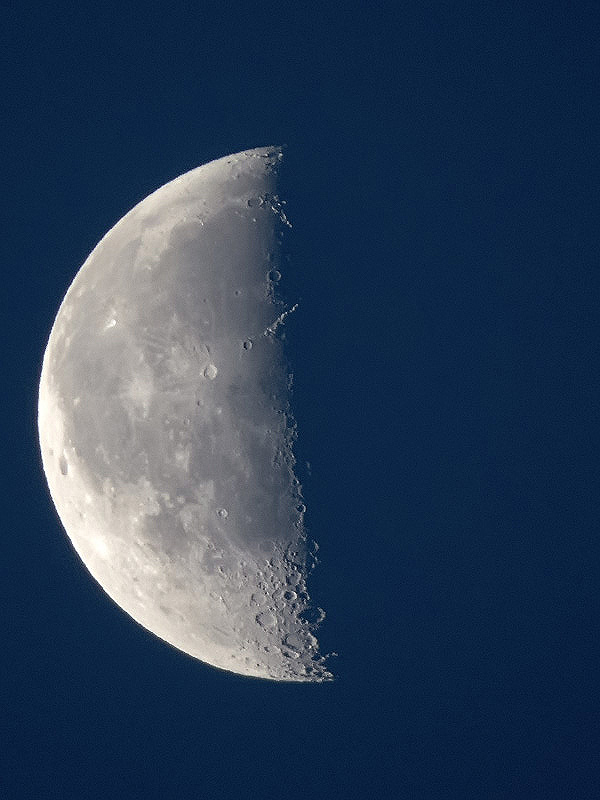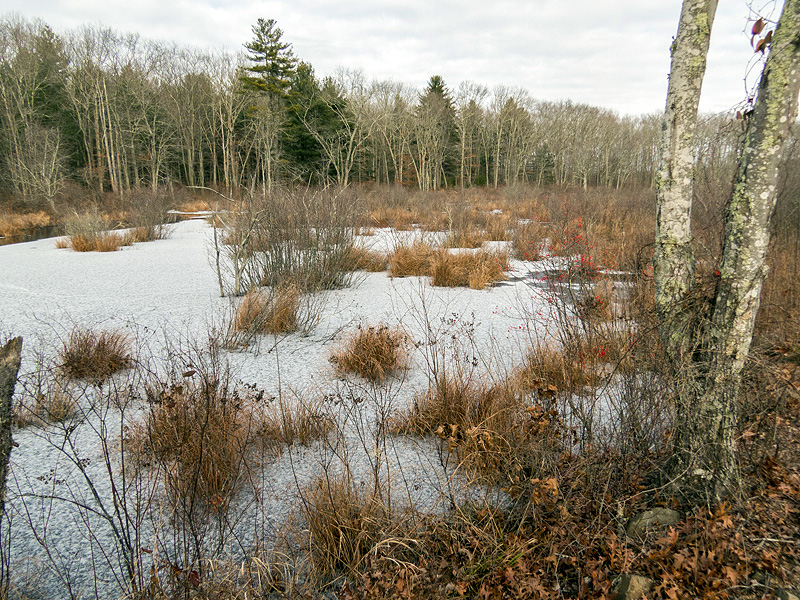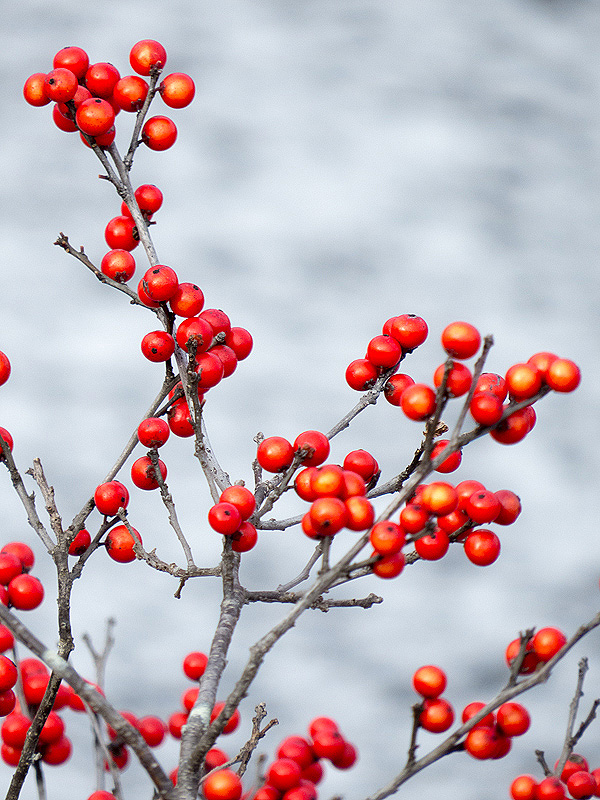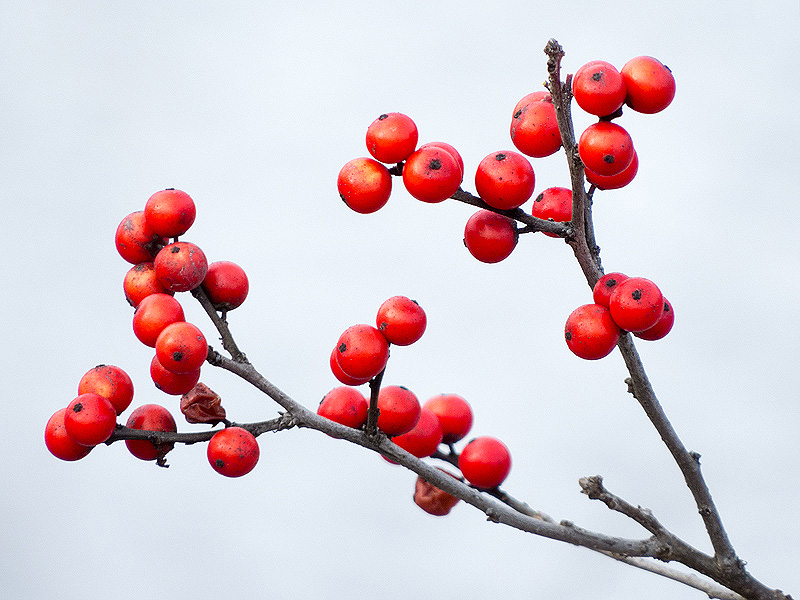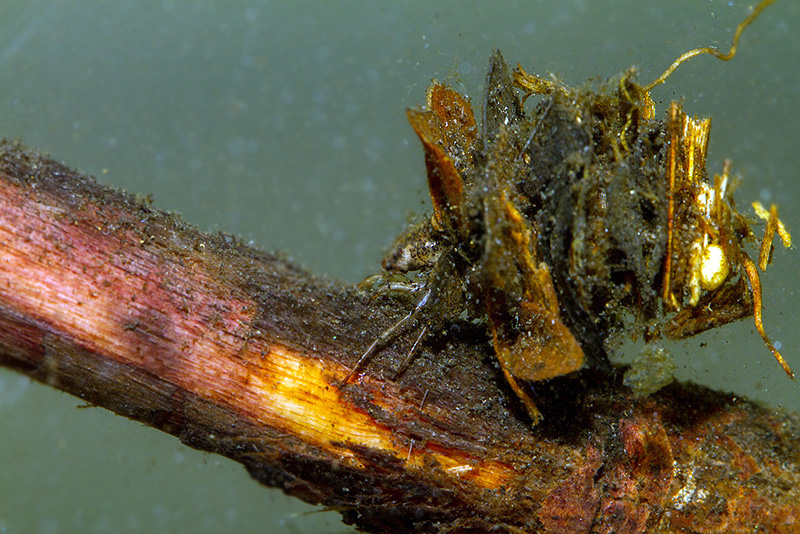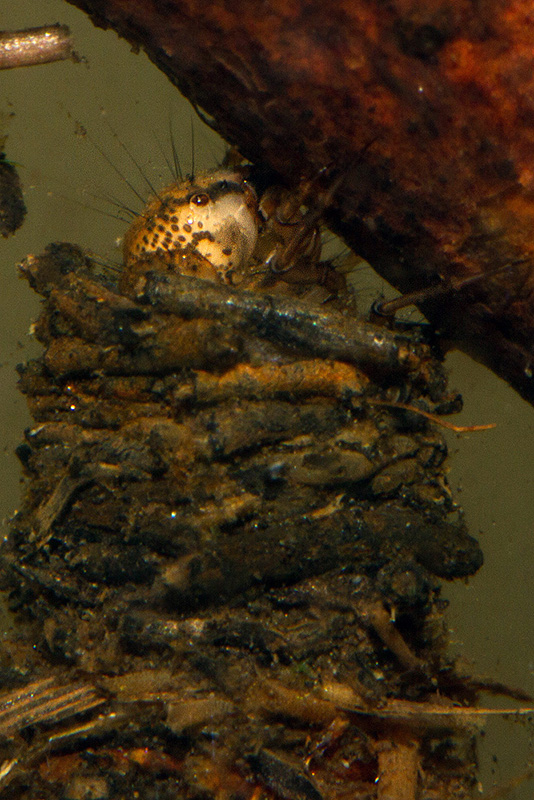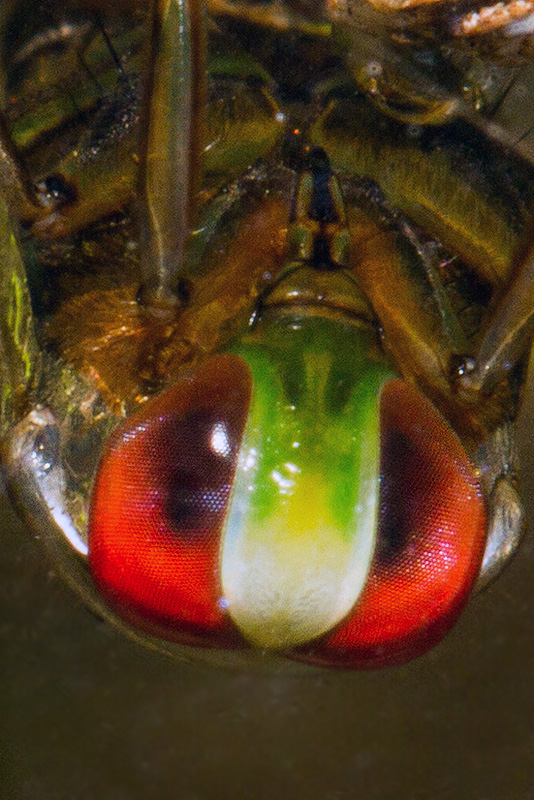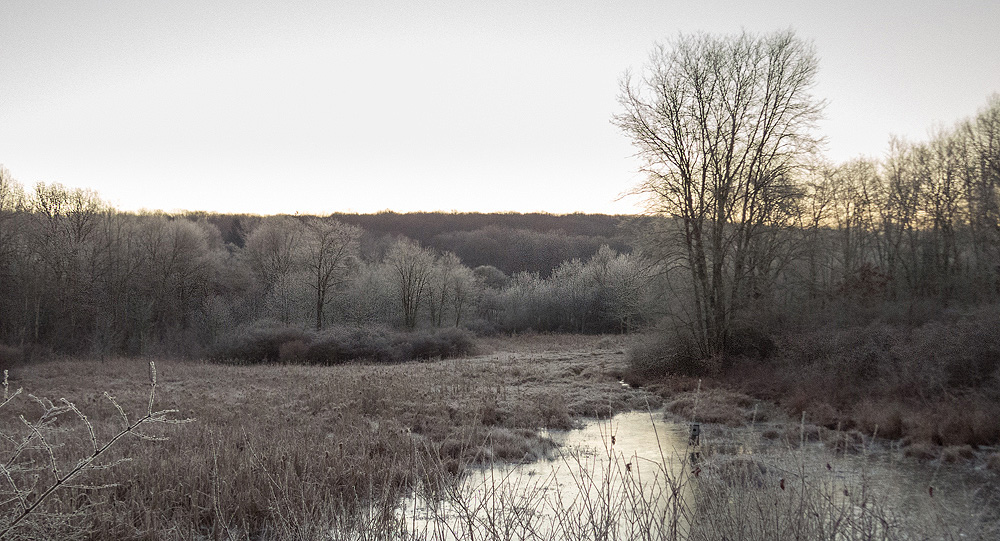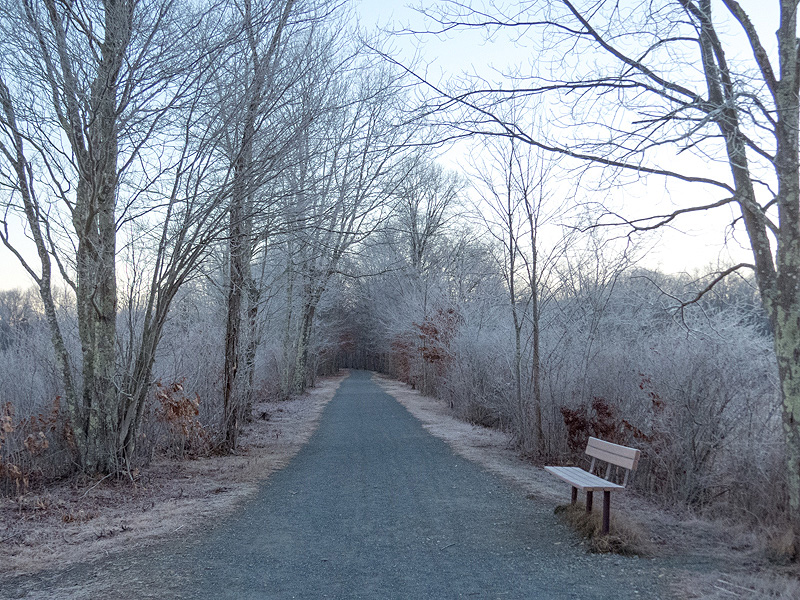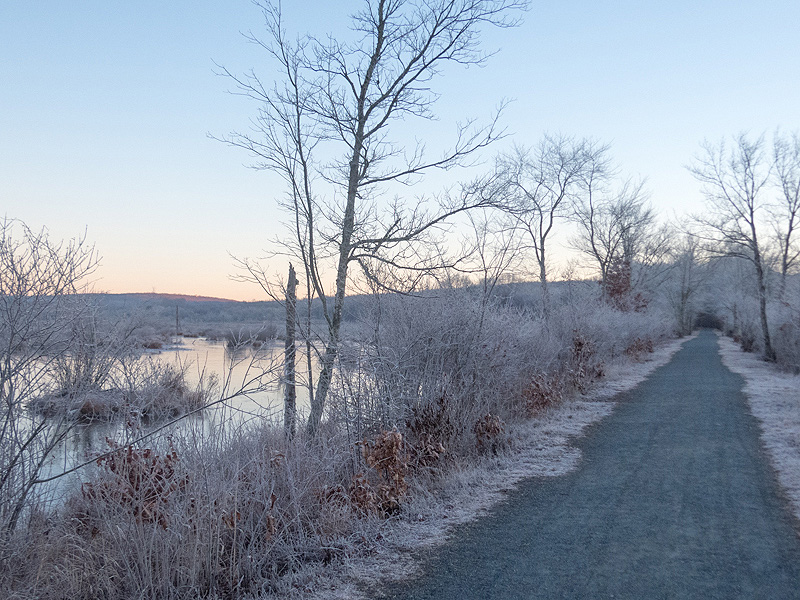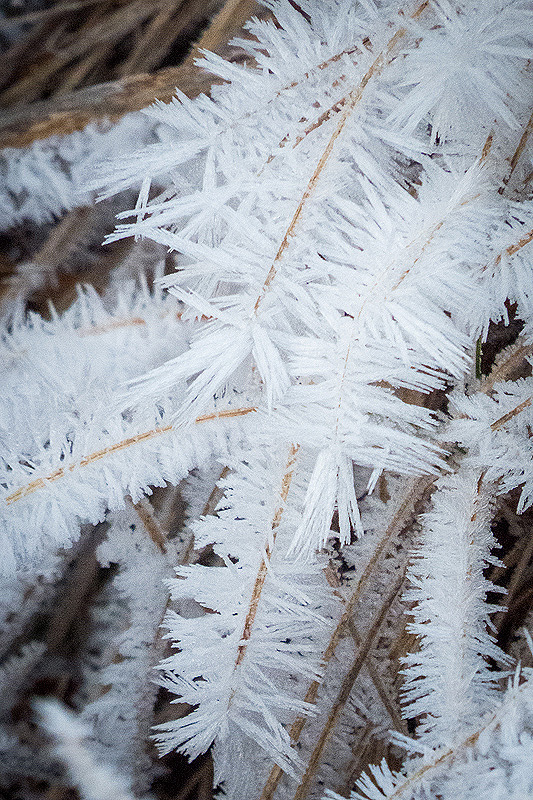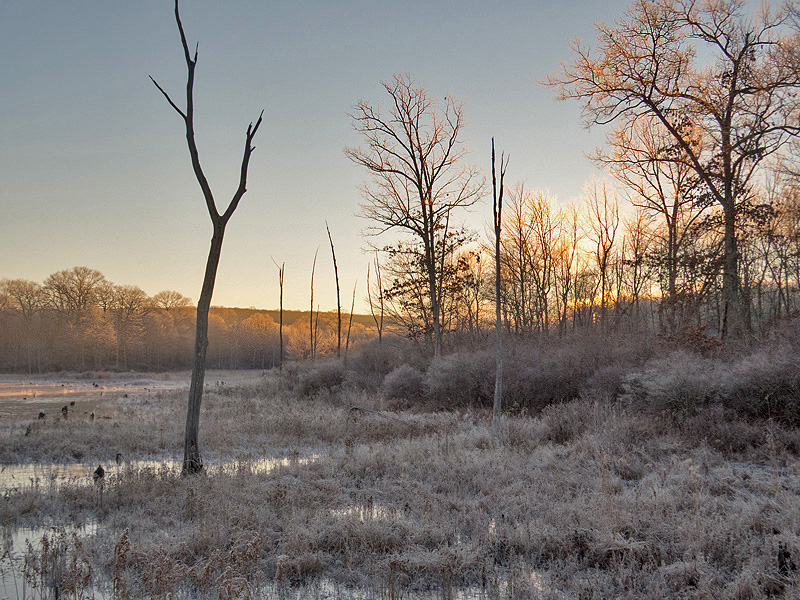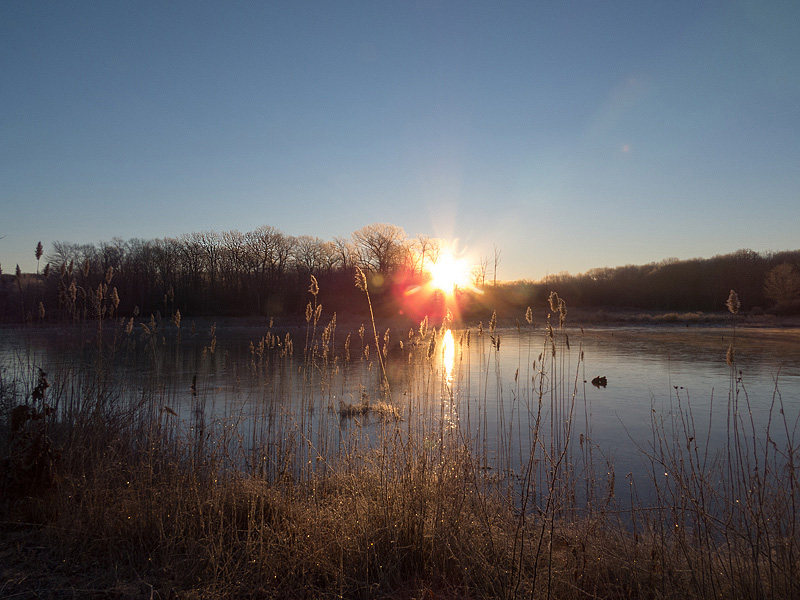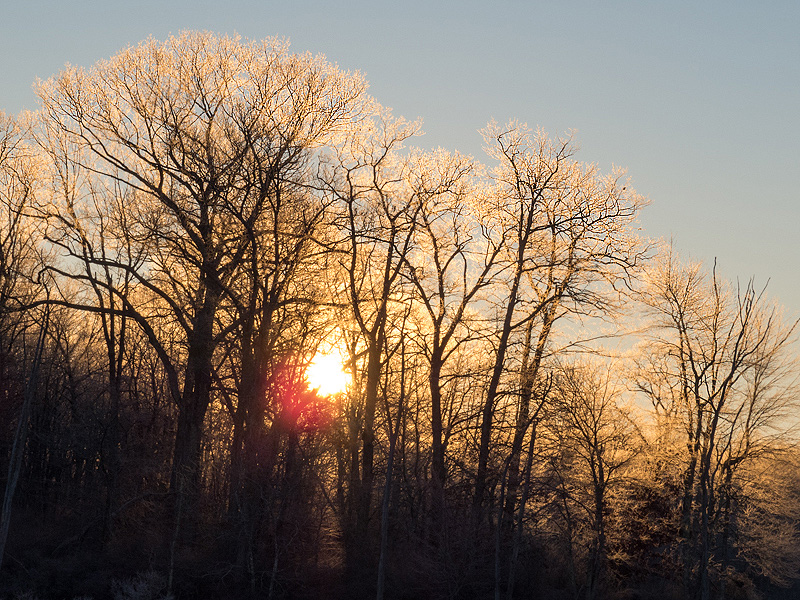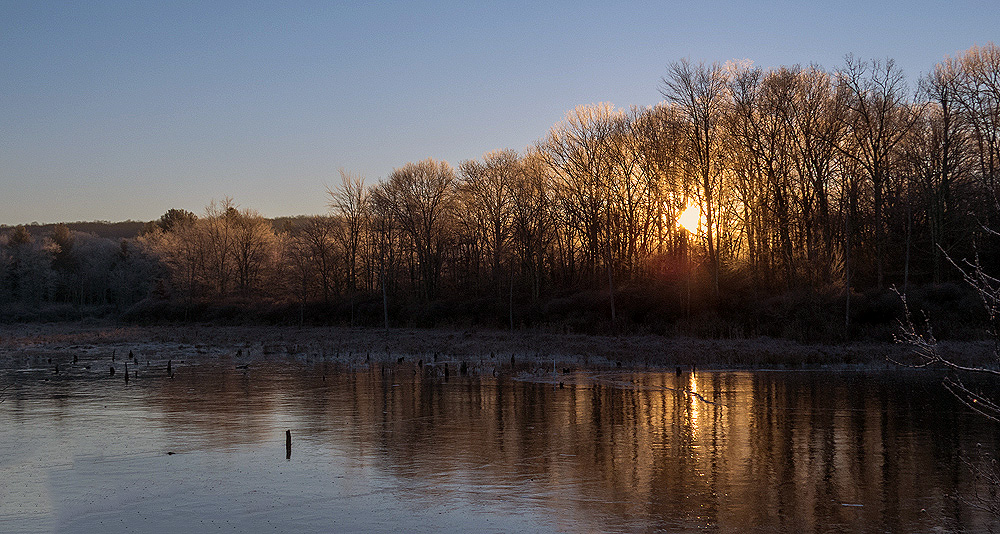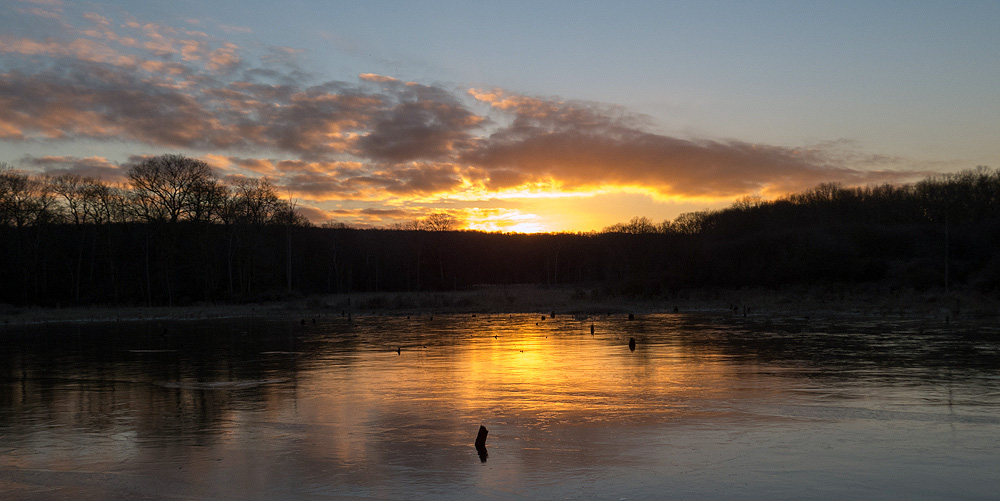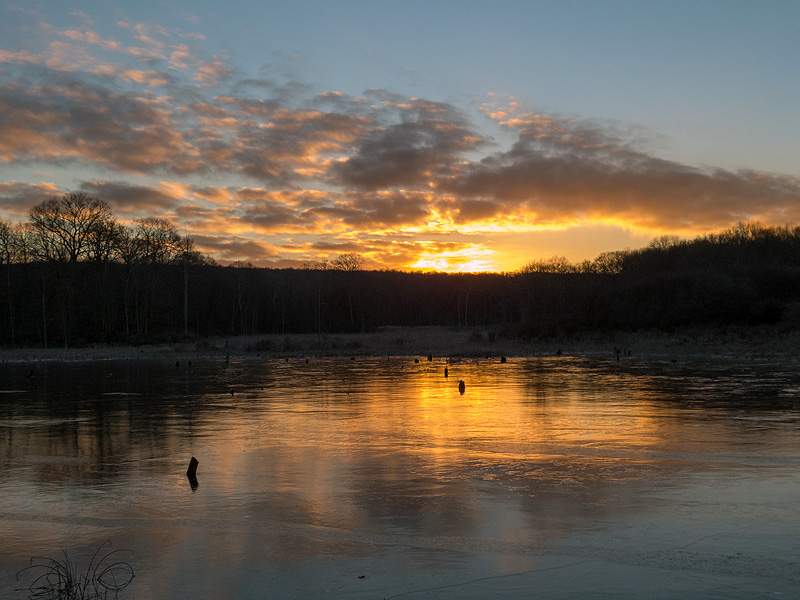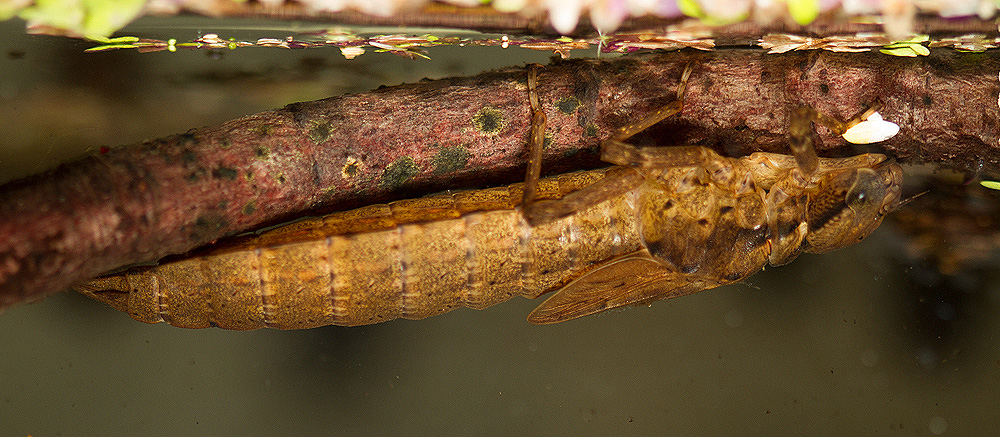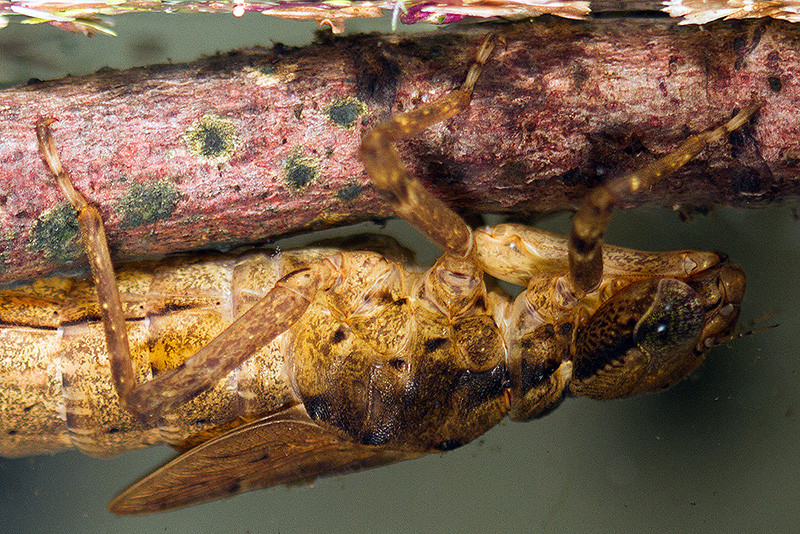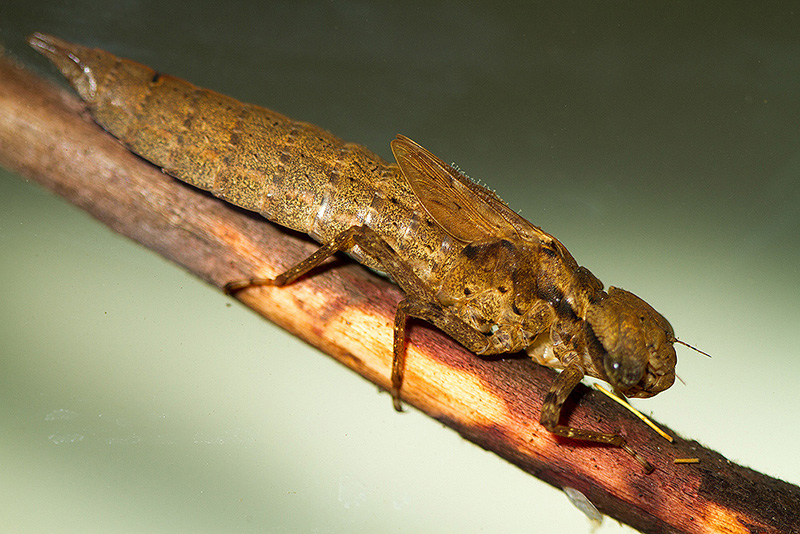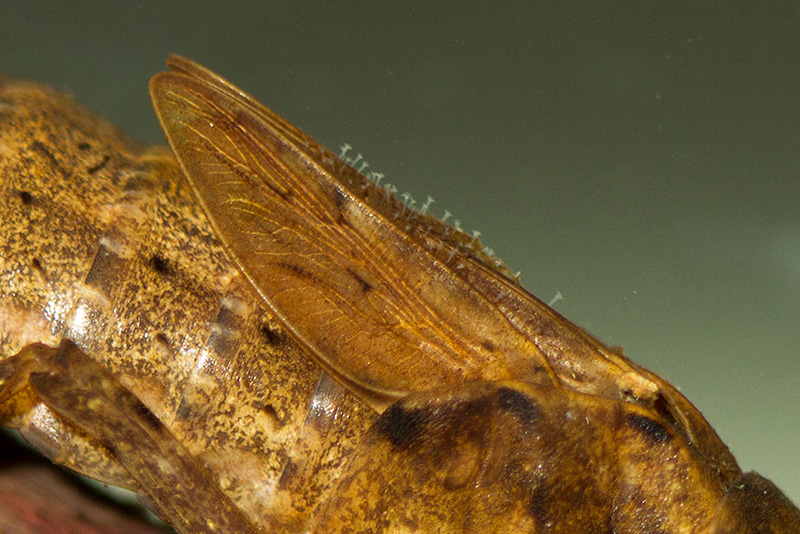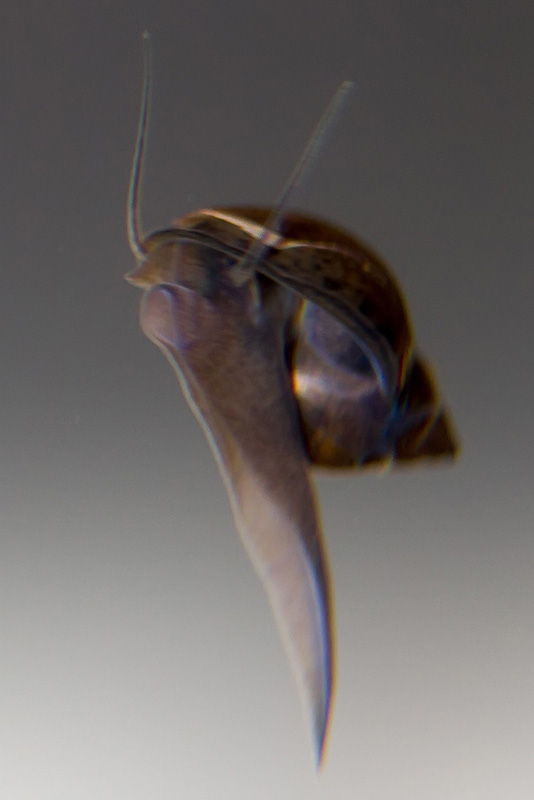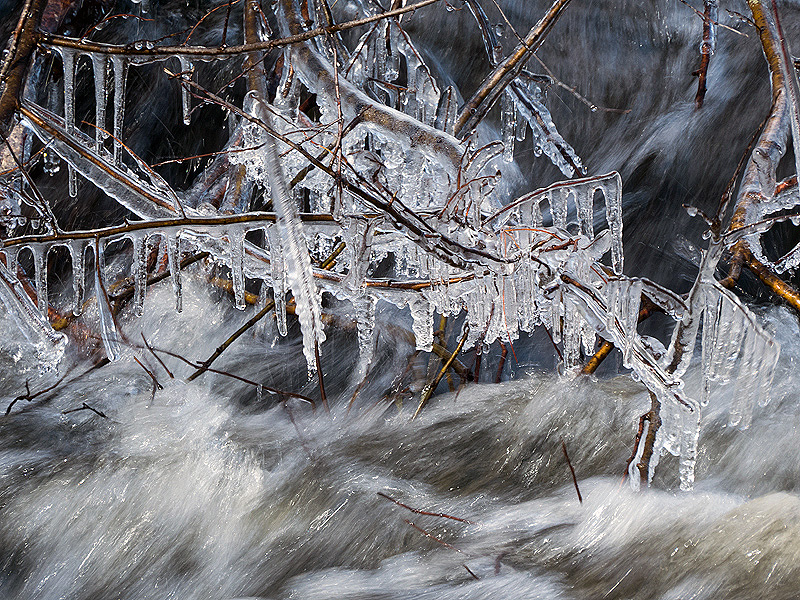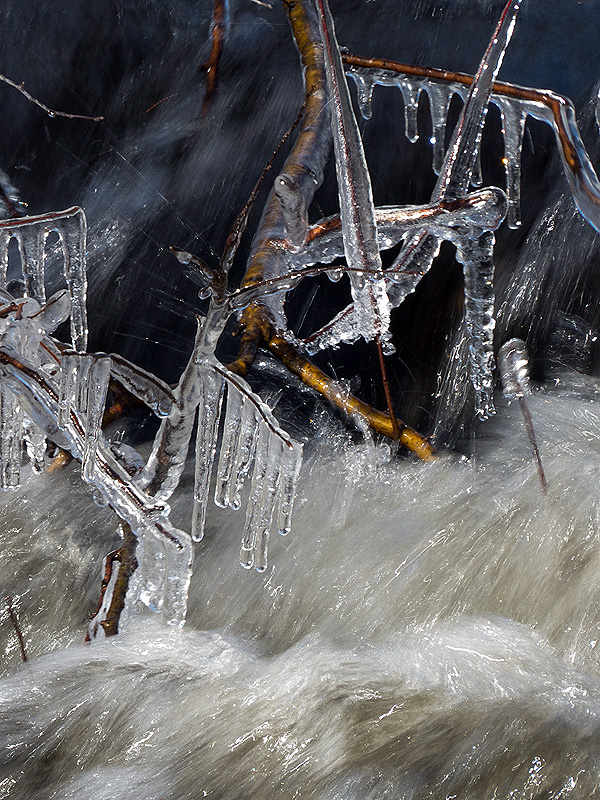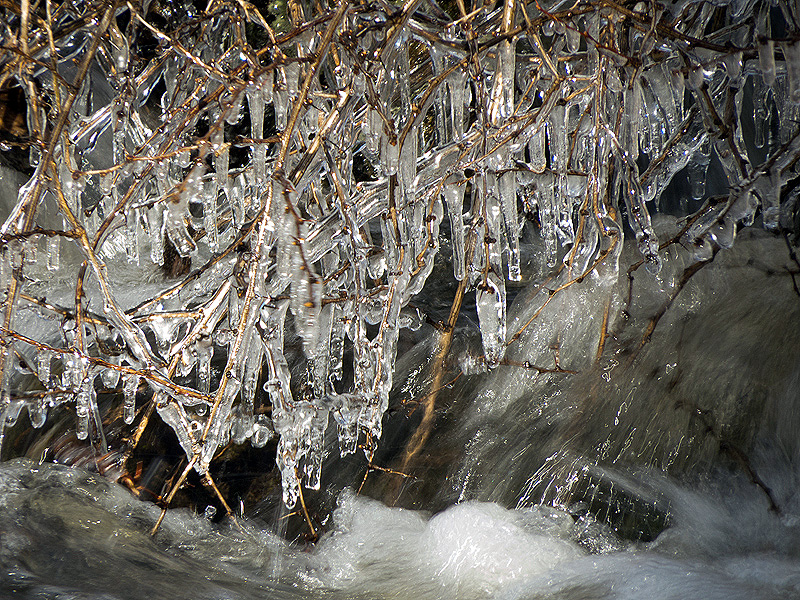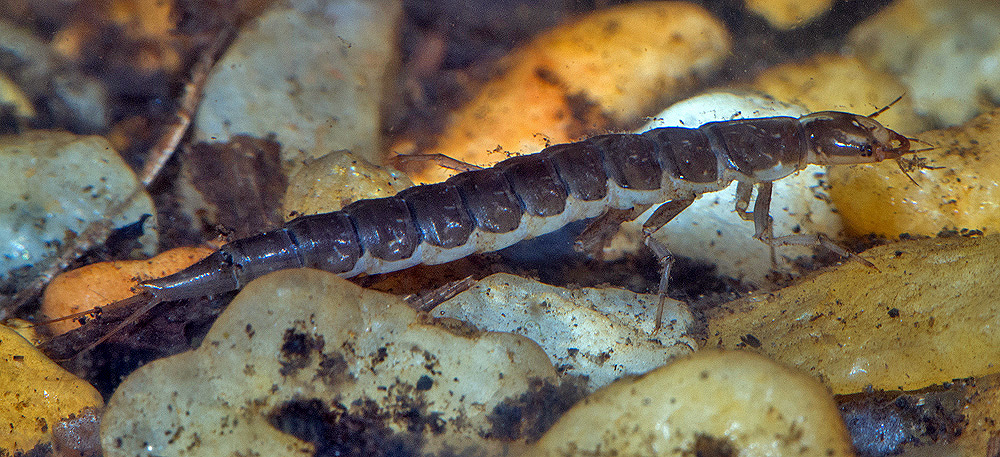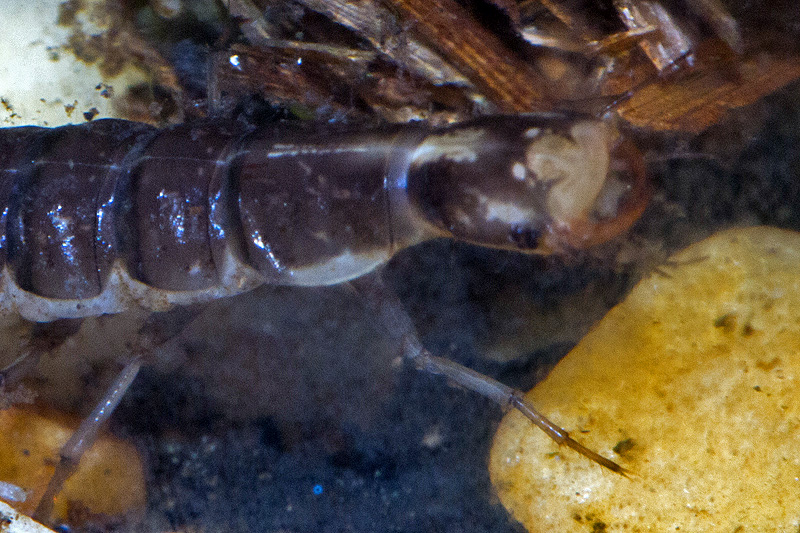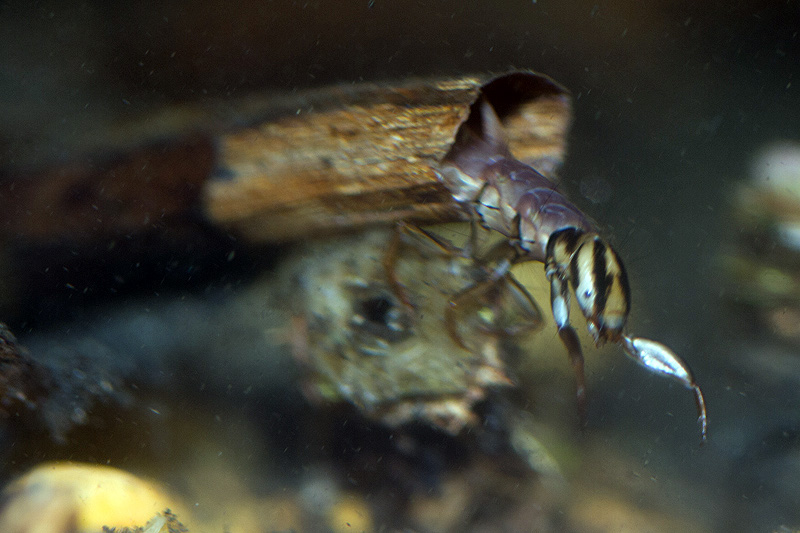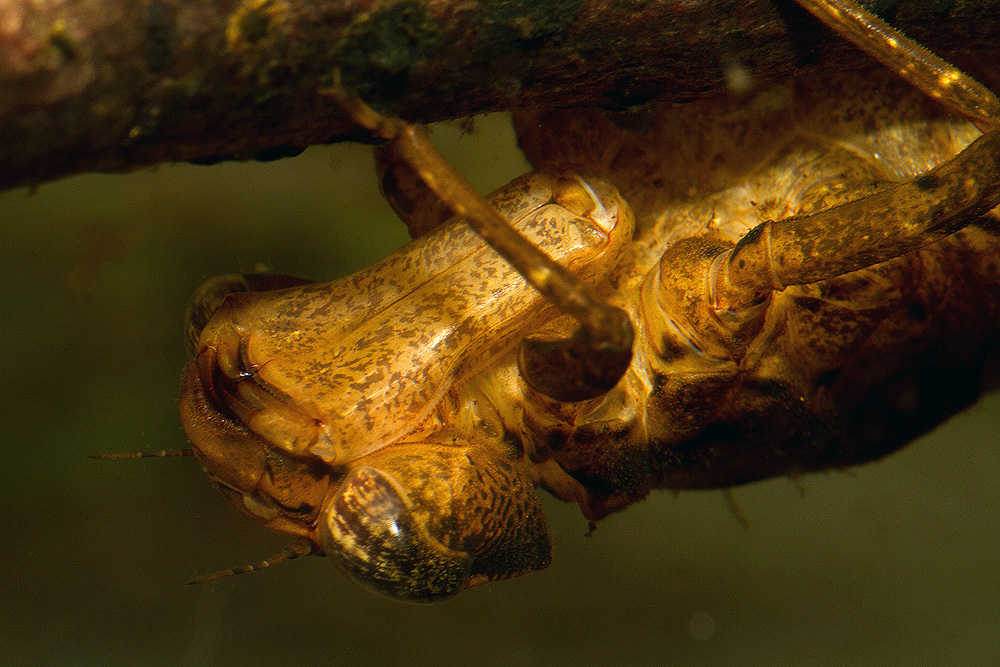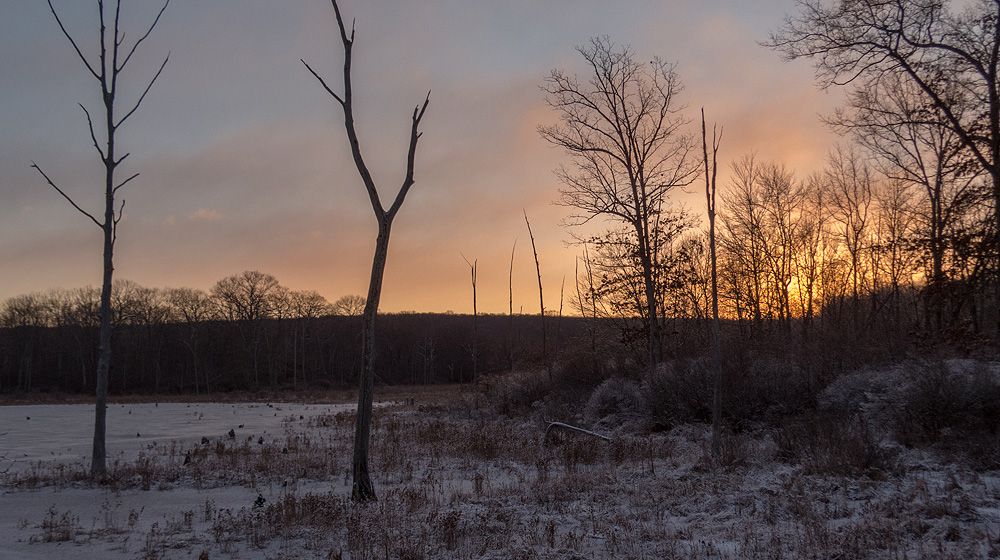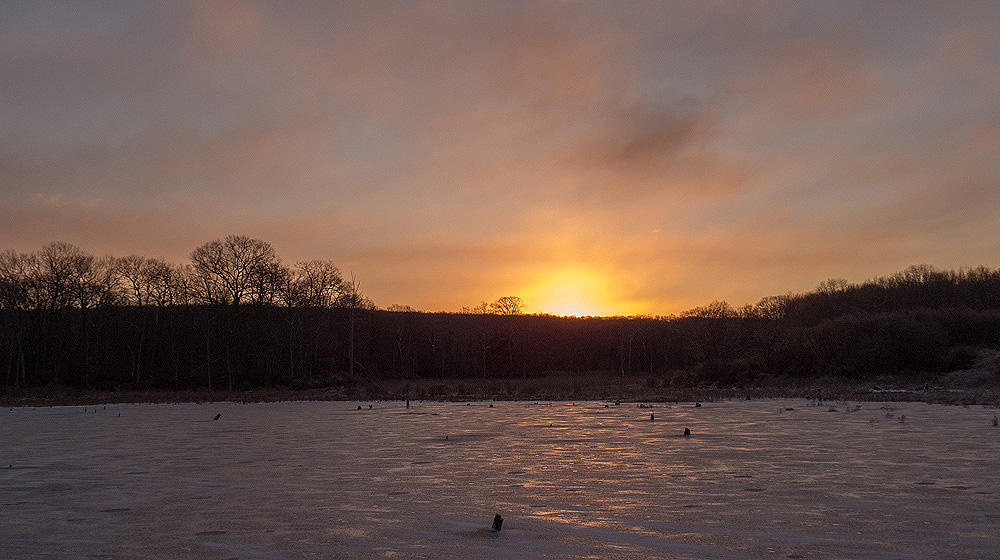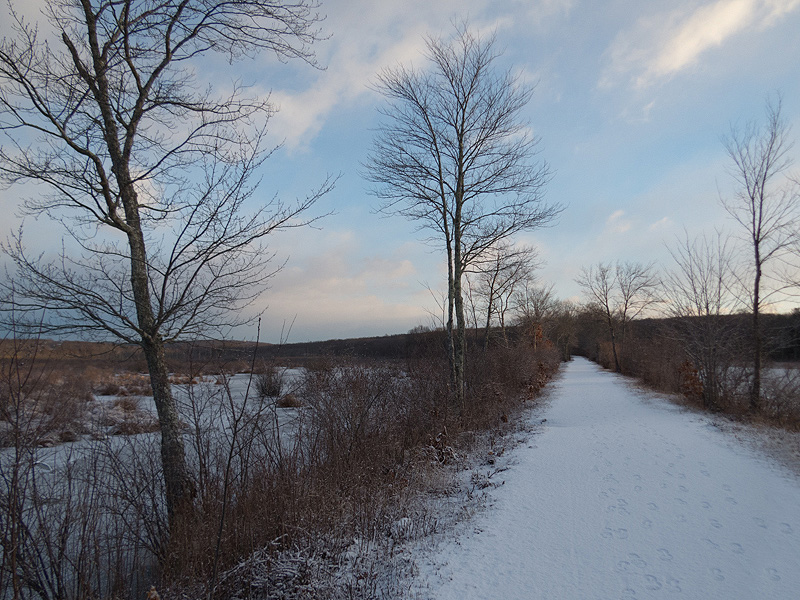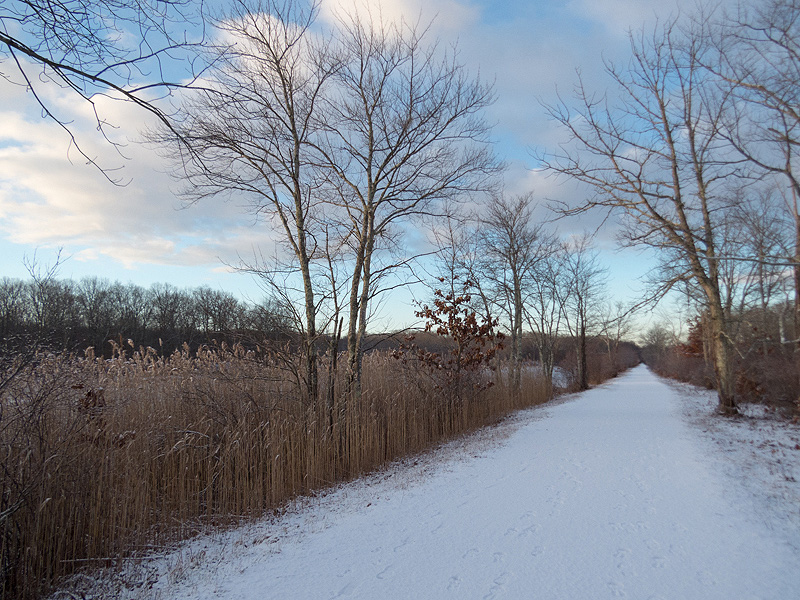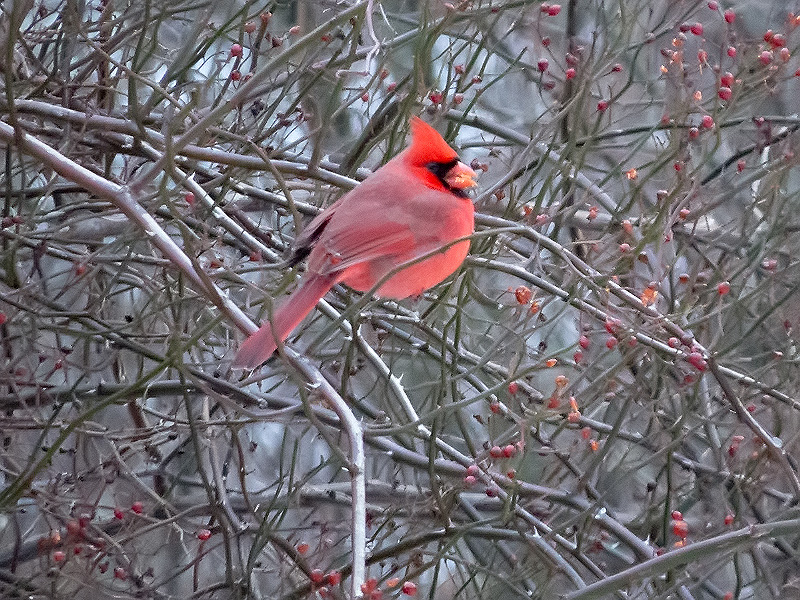Along the Air Line... 2015-2016 - Winter, Part 2 The Air Line Trail in Eastern Connecticut - Stan Malcolm Photos |
mHome Page Stan's FlickR Albums |
January 2nd. Out early, hoping for a sunrise. Twentyseven degrees. |
Nothing photogenic; no clouds in the right places. |
A couple of desaturated shots. |
|
I had already started packing up when a little color developed. |
|
Same moon, bluer daylight sky. (Bluer cold fingers too.) |
January 4th. Out late morning after a dusting of snow from a brief flurry. |
Winterberry (Ilex verticillata) stands out with snow behind it. |
|
Under the thin layer of ice, aquatic insects are still active. Most abundant were Caddisfly larvae (Order Trichoptera). |
The larvae live in cases made from fragments of vegetation (in this case); only their head and legs protruding to let them move around. |
A Backswimmer (Family Notonectidae). I also saw a predaciuous diving beetle, several damselfly and dragonfly nymphs, amphipods, and isopods. |
Check out the Backswimmer's oar-like legs. |
January 6th. Five degrees and heavy frost just before dawn. |
|
|
Especially heavy frost where moisture escapes from holes in the earth. |
Dawn. |
|
|
|
January 8th. |
|
More creatures from Raymond Brook Marsh, now in my aquatics tank at home. Dragonfly nymph, 5 centimeters long. |
|
|
Close up of the wing buds. Some sort of microorganism (the white "parasols") colonizing them. |
Snail, slowly ascending to the surface. |
January 11th. Thirty degrees after heavy warm rain yesterday meant icicles forming over the small falls near Old Colchester Road. |
|
|
More aquatic insects collected from the marsh. This is a Predacious Diving Beetle larva (Family Dytiscidae; perhaps Ilybius sp.). |
Blurry closeup of the head markings. |
Another type of Caddisfly larva (Order Trichoptera). |
January 12th. I finally got a decent shot of the dragonfly nymph's "Labrum" or lower lip You're looking at the bottom of the head The labrum extends from the pincer-like spines at the tip between the eyes, back between the front legs where it's hinged to another section that runs forward to attach to the head. The whole thing can be unfolded in a flash to snag prey and drag it back to the waiting mandibles. Same basic principle as a frog tongue but with spines instead of stickum. |
January 13th. |
|
Light snow last evening. |
|
|
January 14th. A male Cardinal (Cardinalis cardinalis) feeding on multiflora rose hips near the Route 85 trail head in Amston. |

